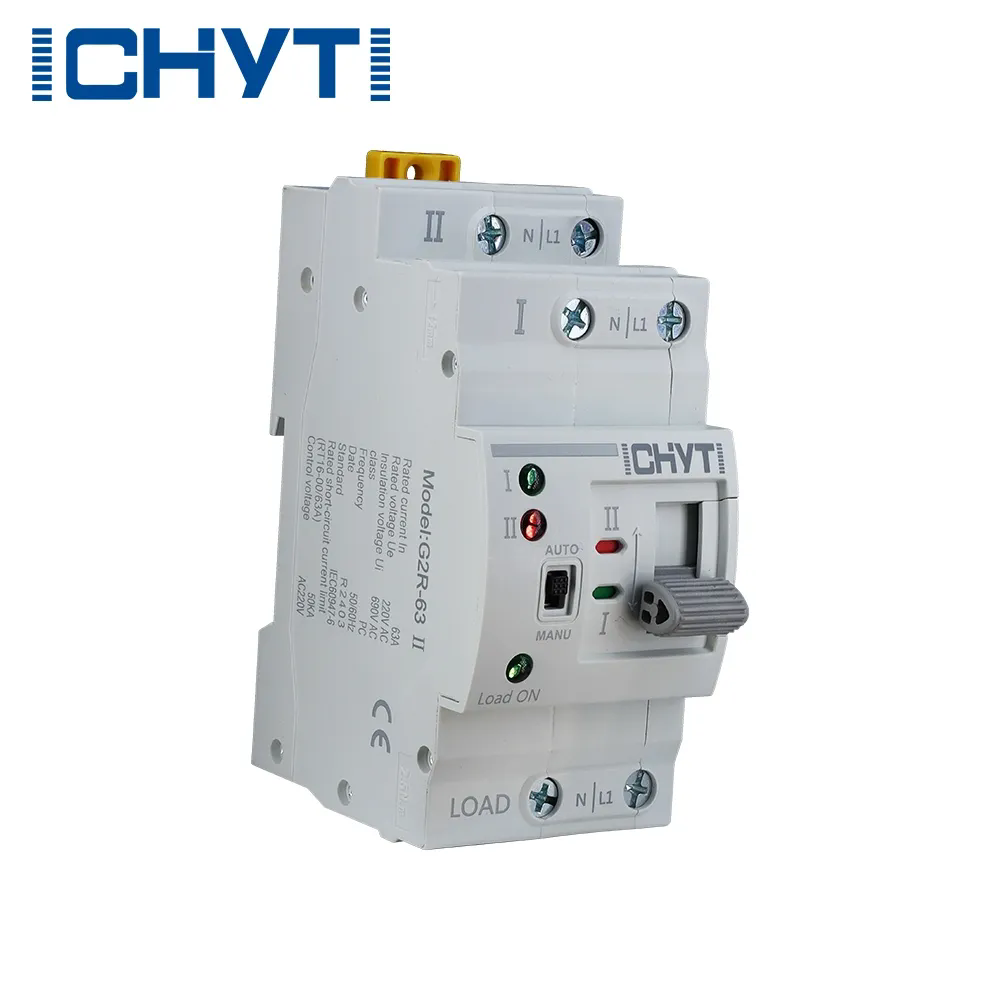Key Features of a Changeover Switch
2024-08-10
A Changeover Switch is a type of switch used to transfer power between two different sources. It's commonly employed in situations where a backup power source, such as a generator, is used to provide power during a utility power outage. The switch allows you to seamlessly change the power supply from the main source (like the grid) to an alternative source (like a generator) and vice versa.
Key Features of a Changeover Switch:
1. Manual or Automatic Operation:
- Manual Changeover Switch: Requires a person to manually switch from one power source to another.
- Automatic Transfer Switch (ATS): Automatically detects when the main power source fails and switches to the backup power source without human intervention.
2. Two-Way Switching: It has two positions—one connecting the load to the main power source and the other connecting it to the backup power source.
3. Load Isolation: The switch ensures that both power sources are never connected to the load simultaneously, preventing any risk of back-feeding or electrical faults.
4. Durability: Changeover switches are built to handle high currents and are designed to operate reliably in various conditions, especially in industrial and commercial settings.
Types of Changeover Switches:
1. Single-Phase Changeover Switch: Used in residential or small commercial installations with single-phase power systems.
2. Three-Phase Changeover Switch: Used in larger commercial or industrial installations where three-phase power is required.
3. Manual Changeover Switch: Requires manual intervention to switch between power sources. Common in residential or small commercial setups.
4. Automatic Transfer Switch (ATS): Automatically switches to a backup power source when the main power source fails. Commonly used in critical infrastructure like hospitals, data centers, and large industrial facilities.
Applications:
1. Residential: In homes with a backup generator, a changeover switch allows the homeowner to switch the power source from the main grid to the generator during a power outage.
2. Commercial: Used in businesses that require uninterrupted power, such as retail stores, small offices, and restaurants, where a generator or secondary power source is available.
3. Industrial: Essential in factories, data centers, hospitals, and other facilities where continuous power is critical. In these settings, automatic changeover switches (ATS) are often used to ensure there is no interruption in power.
4. Renewable Energy Systems: In setups involving renewable energy sources like solar or wind, changeover switches can be used to switch between the renewable source and the grid.
How It Works:
- Normal Operation: The changeover switch connects the load (appliances, machinery, etc.) to the main power source.
- Power Outage: If the main power source fails, the switch can be used (manually or automatically) to connect the load to the backup power source.
- Restoration of Main Power: Once the main power source is restored, the switch can be flipped back to reconnect the load to the main source.
Importance:
- Uninterrupted Power Supply: Ensures that critical operations can continue without interruption, even during power outages.
- Safety: Prevents back-feeding, which can be dangerous for utility workers and damaging to equipment.
- Convenience: Simplifies the process of switching between power sources, especially in systems with an automatic transfer switch.
Usage Scenario:
- During a Power Outage: If the main power supply fails, the changeover switch is engaged to disconnect the load from the main supply and connect it to the generator or other backup power source.
- After Power Restoration: The switch is used again to return the load to the main power source, ensuring the backup source can be shut down or returned to standby mode.
Changeover switches are essential for ensuring that critical systems remain operational during power outages, providing flexibility and safety in managing multiple power sources.



